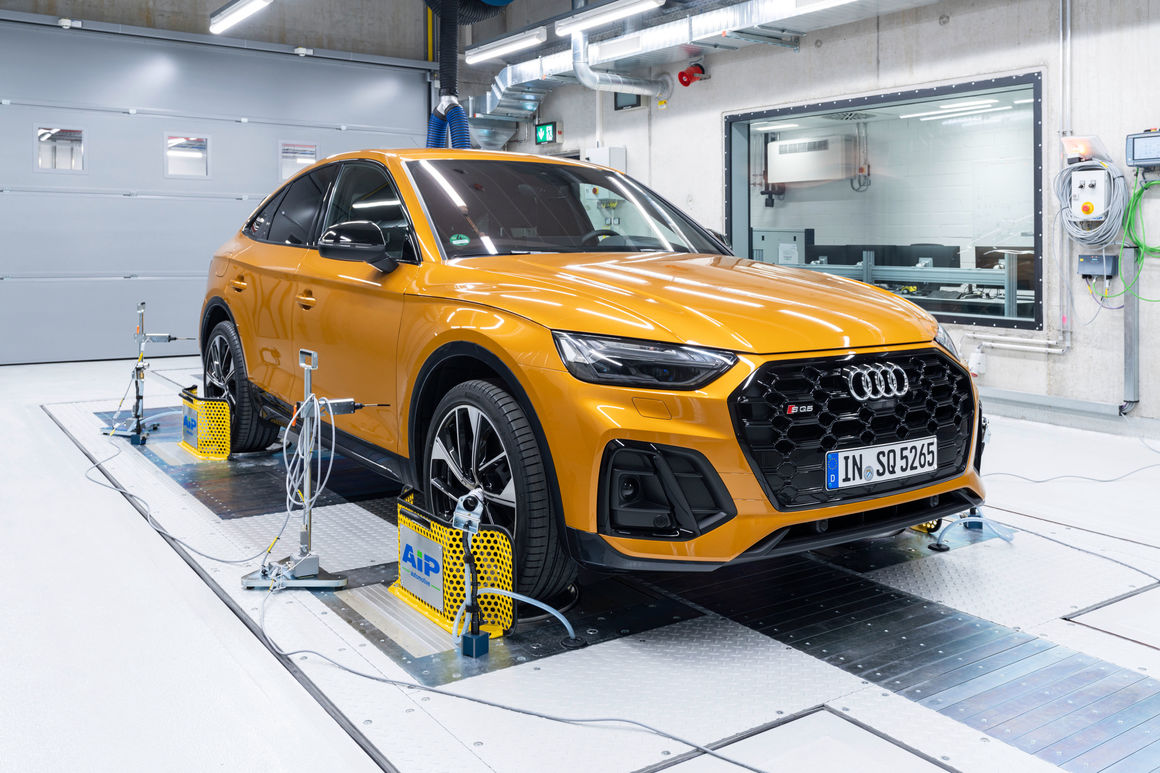On April 28th, Garage 42 was invited to participate in the “Audi Tech Day-Acoustic System” event. The event connected online with Audi’s acoustic strategy expert Dr. Tobias Gründl and Dr. Michael Wisniewski, the project director of audio system development, at Audi’s headquarters in Germany to learn about Audi’s acoustic philosophy, from the basics of car audio systems to Audi’s response strategies.
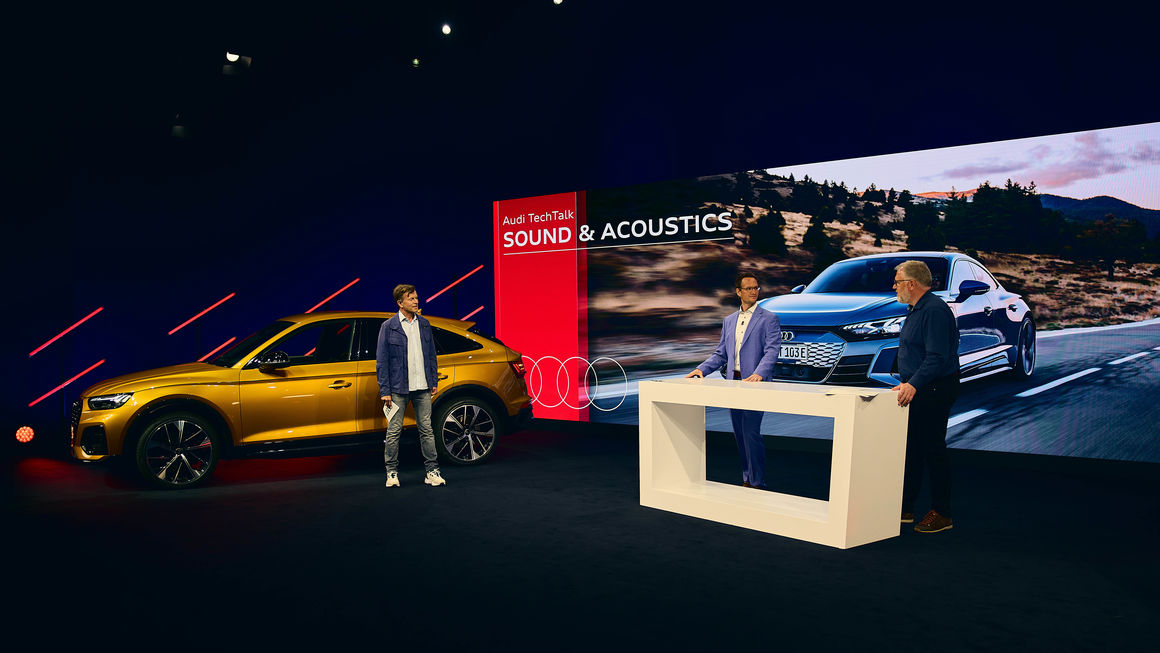
What are the noises inside a car and where do they come from?
According to Audi, the background noise inside a car comes from various mixed noises and sounds. Drivers frequently hear driving noise, including the sound of the engine, the sound of the tires rolling on the road, and the air acoustic noise from the chassis. In addition, there are some short-lived noise sources, such as the slight turning sound of the window regulator or the sound of the doors closing.
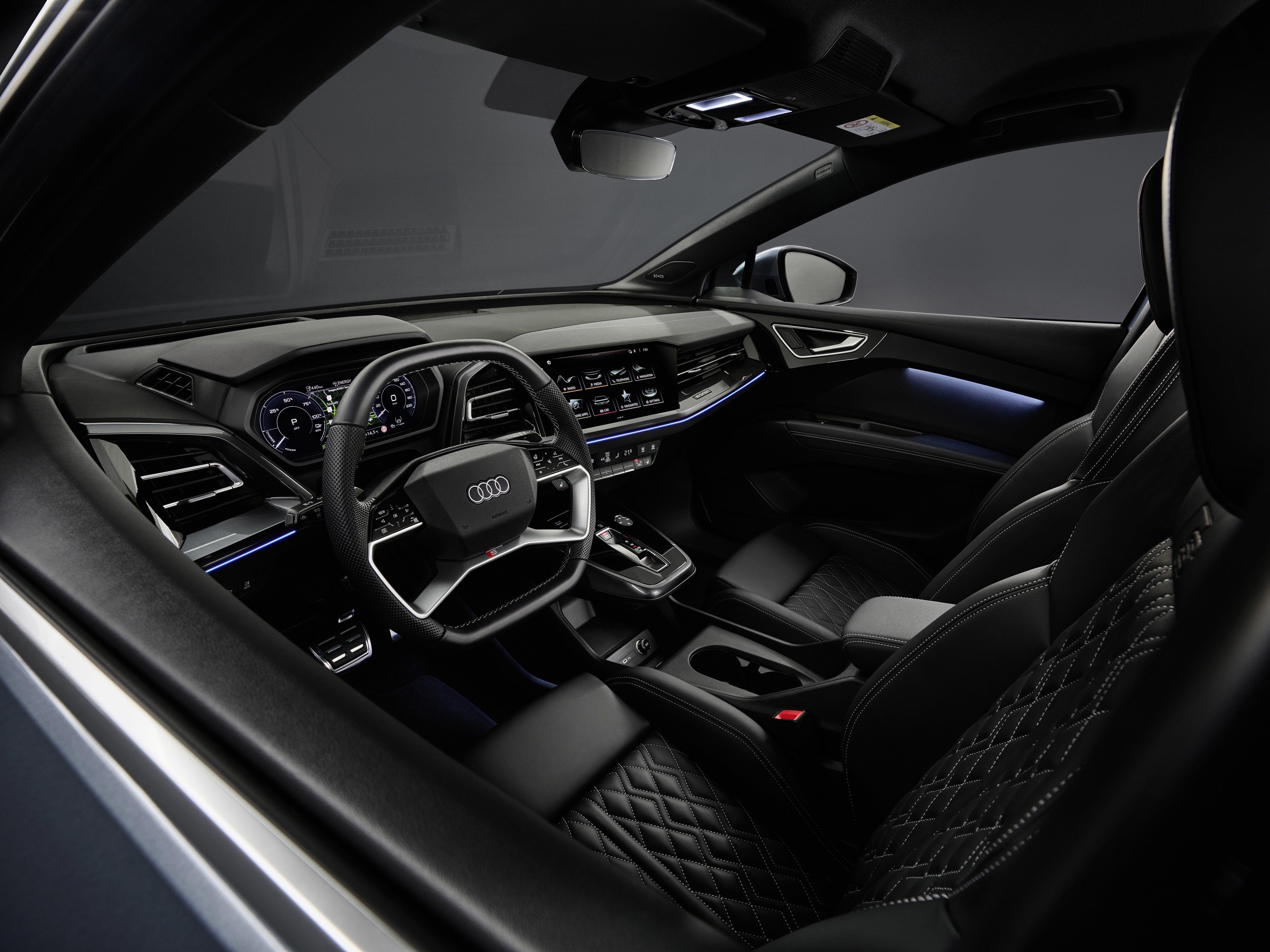
In an ideal situation, signal and information sounds should smoothly and seamlessly convey functional information. This includes the click of the signal light and the sound feedback of MMI touchscreen operations. The buttons and switches should produce soft and distinct sounds when turned on. The vehicle only emits interference warning sounds when necessary, requiring passengers to stay highly focused.
How does Audi trace the source of interference noise?
Audi considers noise reduction from an overall perspective. The “Rustle and Rattle” team consists of experts from the fields of vehicle development, body development, and quality assurance who work together to address noise reduction issues. Each new Audi vehicle undergoes tests and evaluations by the team’s experts on the road, vibration lanes, and hydropulse equipment.
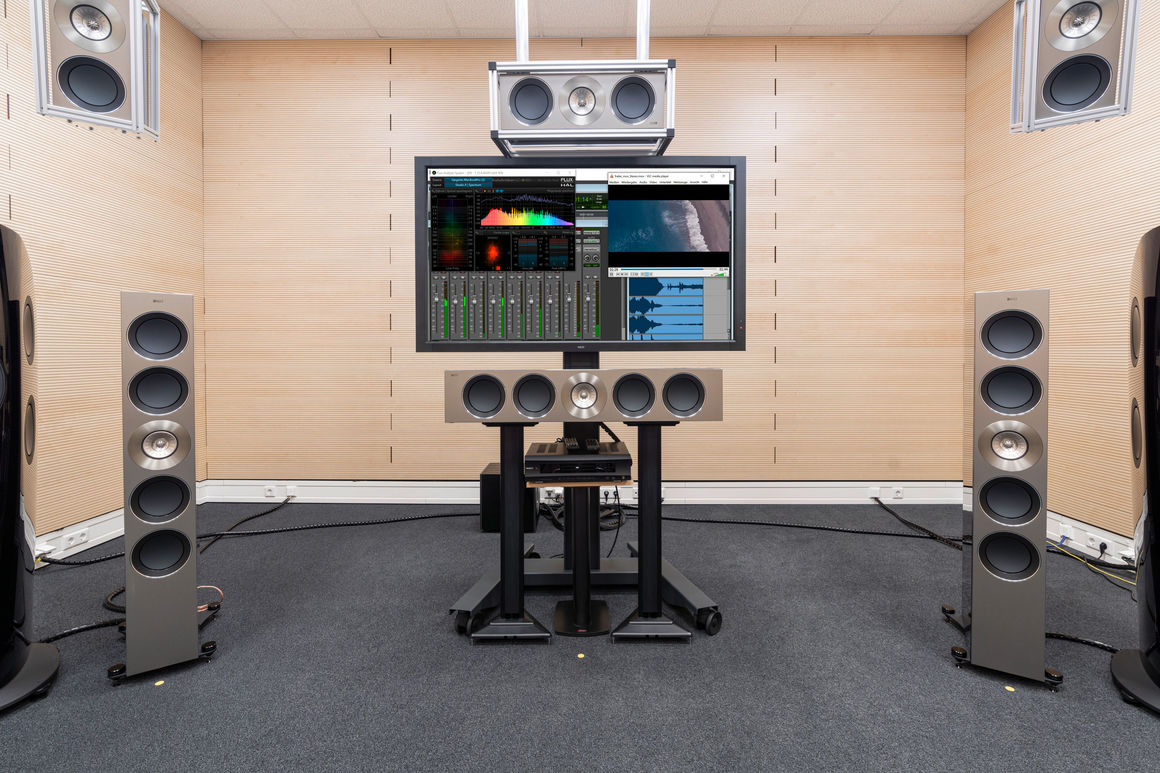
Hydropulse equipment refers to a four-column servo hydraulic test stand that vibrates the vehicle. When the vehicle vibrates at a low frequency of up to 50 Hz, the passenger compartment will produce crackling and squeaking sounds. To check and find the source of the noise, Audi tests the vibration response of individual parts or the entire chassis. The source of the noise may not be audible. The acoustic vibration balance of a vehicle has a significant impact on driver comfort.
Are there any differences in acoustic systems between gasoline-powered and electric vehicles?
Unlike internal combustion engines, electric motors produce almost no vibration, oscillation, or mechanical noise. In an electric vehicle environment, noises that were not as easy to hear before may be more pronounced, including air acoustics and tire rolling noise. Audi tries to minimize the impact of noise.Taking the Audi e-tron as an example, the model has adopted special sound insulation measures to reduce all possible noise transmitted through the chassis. All openings and cavities in the chassis are filled with ultra-fine fiber flannel, and the wheel arches are covered with textile fabrics and ultra-fine fiber flannel to absorb sound. In addition, special materials that reduce metal plate vibration are also used to cover relevant surfaces, such as the floor.
The complex multi-layered structure at the front of the vehicle prevents noise from entering the interior, and a similar device is installed at the rear of the vehicle due to the additional rear axle motor brought by the new electric vehicle architecture. Furthermore, the motor is completely wrapped in a noise-reducing capsule structure. Even the covering under the floor is designed to absorb sound. The foot mats on the vehicle floor are made of foam, thus maintaining quietness inside the car. The second major factor that creates a comfortable atmosphere inside the Audi e-tron is its aeroacoustic design. When the vehicle speed reaches 85 km/h or above, wind noise is particularly noticeable. Therefore, the Audi e-tron has been designed to resist noise in details such as the door seal strips, the exterior mirrors, and the drainage channel.
Does Audi also use technology to amplify or actively cancel out noise in the car?
In recent years, active acoustic processing technology has become increasingly important. For example, active noise cancellation (ANC) can reduce some engine noise. The system is based on ANC microphones that are built into the roof lining to measure the sound level inside the car. The control device reverses the noise sound waves and emits anti-phase sound waves through the subwoofer. On the other hand, the Audi SQ5 TDI has an actuator in the exhaust system to produce a more dynamic and full engine sound. In the Audi e-tron GT, the audio system under the driving mode selection system can generate dynamic sound effects.
How can the car create a pleasant yet unobtrusive atmosphere inside?
Audi states that this is the responsibility of the sound development personnel. They are responsible for handling all sounds, adjusting, suppressing or enhancing them when necessary. Apart from the noise source, each car itself, as an acoustic space, presents special challenges: as the number of passengers changes, the space volume changes. Some cars come equipped with panoramic roofs, while others do not. In addition, interior materials such as fabrics or leather coverings have different effects on sound reflection or suppression. Most importantly, the time required for sound to travel from the speakers to the listeners’ ears is also different.
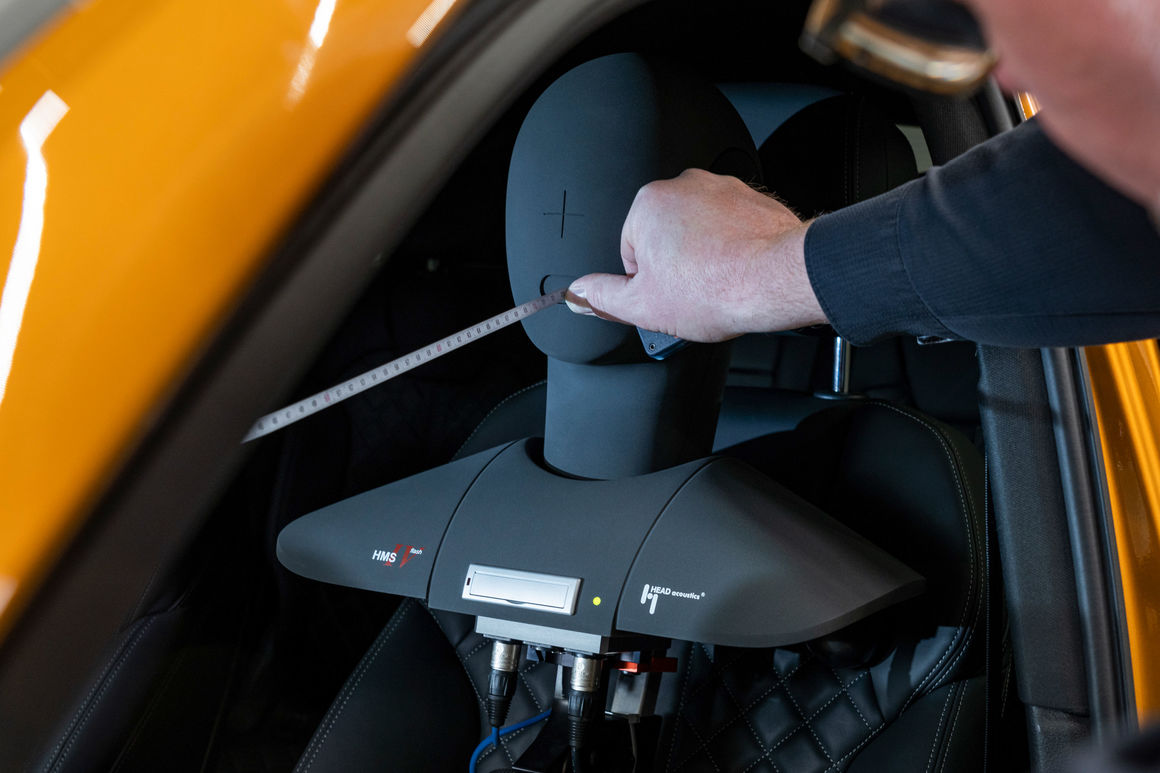
How does the 3-D sound system work?3-D audio refers to the ability to reproduce sound in all three dimensions of space in acoustics. When recording technology first emerged, sound was reproduced through a single speaker—monaural sound. This meant that stereo sound could not be achieved and the sound was flat. In the 1960s, stereo sound was introduced: two microphones recorded music from different positions. When played back, the recorded audio information—monaural signal—was allocated to two different channels and played through left and right speakers. This created a spatial sense of sound, which is the stereo effect. “1-D” refers to this kind of stereo sound.
“2-D” refers to surround sound. This multi-channel technology has been widely used since the turn of the millennium. Music comes from a subwoofer and several speakers located in the front, rear, and sides. Depending on the number of speakers, there are 5.1 and 8.1 standards. Technically, each audio effect can be assigned to a speaker or a specific group of speakers.
To achieve 3-D audio, a higher level of additional sound source technology is required. The current Audi Q7 model is equipped with the Bang & Olufsen sound system which provides 3-D audio effects. It uses several additional broadband speakers built into the A-pillar, as well as speakers built into the B-pillar and the headliner, in order to provide the passengers with the immersive sound quality of a concert hall.
What role does digitization play in acoustic development?
Harmonizing with the corresponding vehicle model is a key element in acoustic development. Audi has developed the sound CUBE sound system to meet these special requirements, reducing the number of versions and the corresponding development time. In addition, Audi uses amplifiers that operate via a unified audio bus, simplifying the system architecture.
In the digital sound laboratory, Audi uses virtual technology to refine new sound solutions. The team has facilities such as reference rooms, anechoic chambers, and climate chambers, which can simulate temperature ranges and observe the operation of hardware such as speakers. Using simulation analysis, the team can adjust the sound configuration of each seat in the virtual reference space, in order to ensure that each passenger obtains the best auditory experience in their location.
Audi’s collaboration with SonosThrough the Q4 e-tron, Audi has teamed up with new partner Sonos to attract young target groups with strong bass. After the e-tron, Audi’s collaboration with Sonos will extend to other compact-level models to be launched later this year.
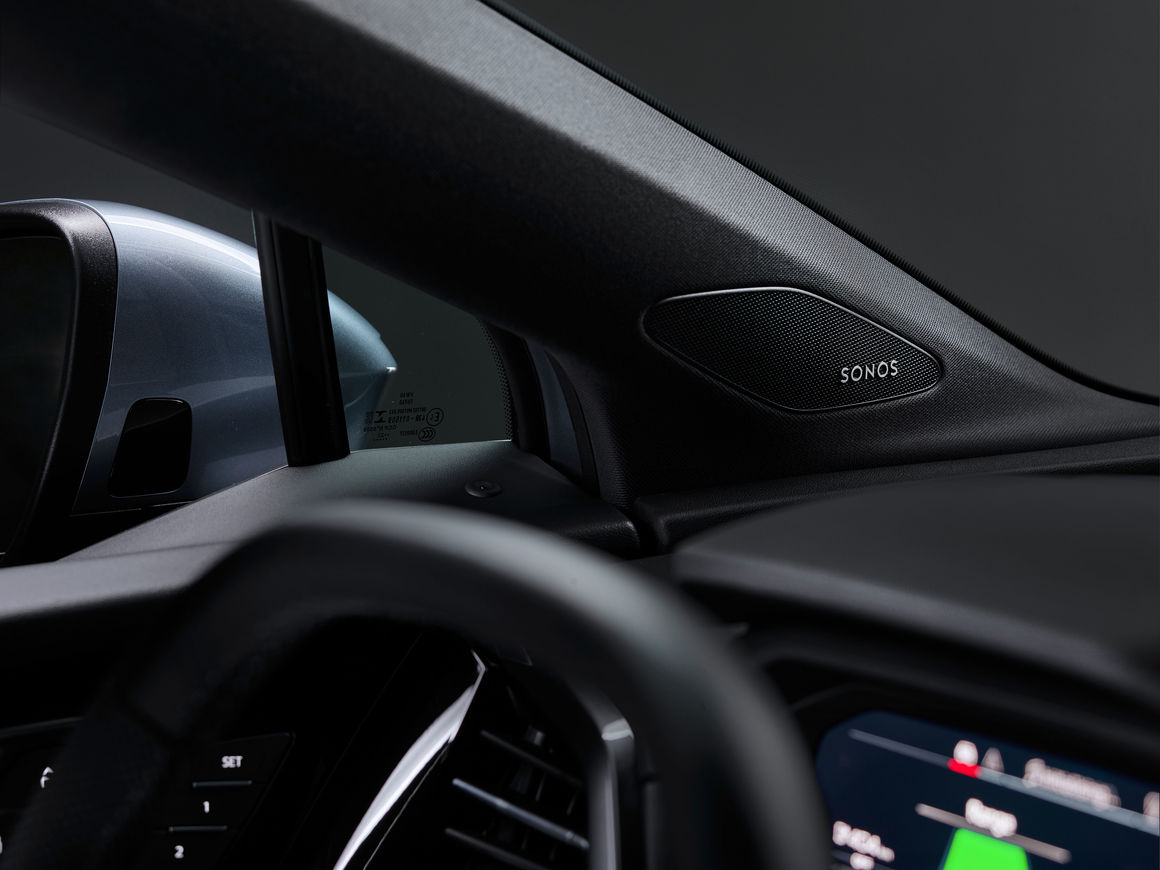
What are Audi’s sound developers currently researching?
Audi believes that immersive sound is the focus in a brand-new entertainment experience. Unlike traditional 3D surround sound, immersive 3D sound is object-oriented. During this process, the sound in the audio file is linked with metadata, which covers precise information about the corresponding playback method and location of sound in physical space, reproducing the acoustic scene of recording.
In addition, Audi is researching the usage scenario of connecting smartphones with Bluetooth to play music in cars. Due to the limited bandwidth of Bluetooth wireless technology, sound quality may sometimes be compromised. Audi plans to use built-in SIM cards and high-performance receiver modules to turn the car itself into a receiver and achieve multi-channel audio streaming.
At the same time, Audi also mentioned that OTA is unlikely to upgrade the sound system performance. Audi has considered this issue, and may add new functions in the future, but the overall performance of the system will not be changed through OTA.
Team dedicated to optimizing car background noise
Audi’s “Rustle and Rattle” team is dedicated to tracking, analyzing, and correcting car noise. To achieve this goal, acoustic experts test the vehicle in environments with strong vibrations, such as vibration tracks, pulse equipment, and vibration tables, and describe and distinguish noises with everyday vocabulary.
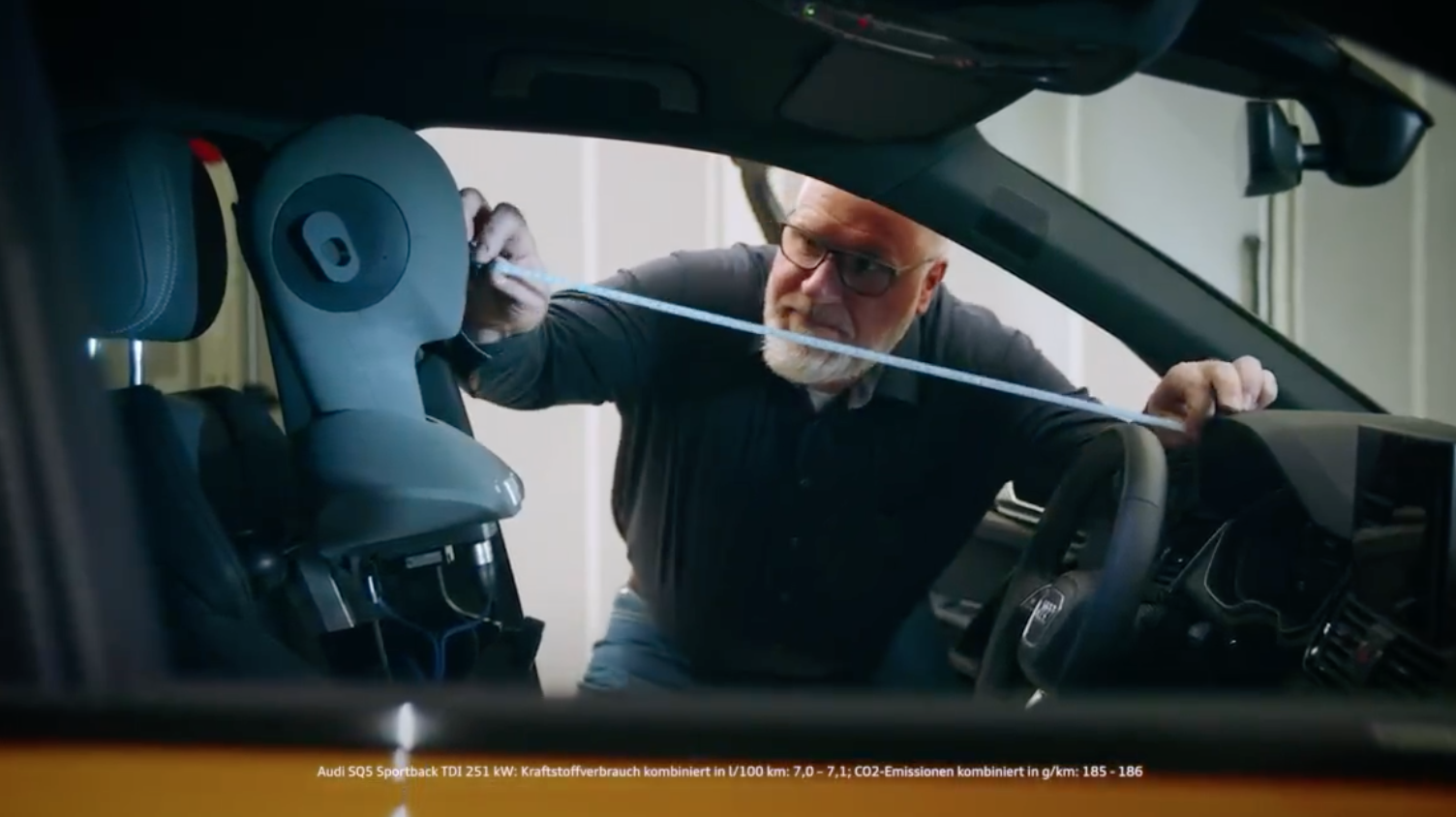
To find the source of the noise, acoustic experts often need to inspect the entire vehicle, as well as key material pairs, clear obstacles, and test aerodynamics to locate the noise. The opinions proposed by the team can sometimes promote the improvement of part quality, and sometimes discover production defects and even problems caused by the construction itself. Therefore, the “Rustle and Rattle” team has been involved in the vehicle development from the beginning to ensure that the internal noise of the vehicle is decreasing even as the vehicle structure becomes more complex.
This article is a translation by ChatGPT of a Chinese report from 42HOW. If you have any questions about it, please email bd@42how.com.
